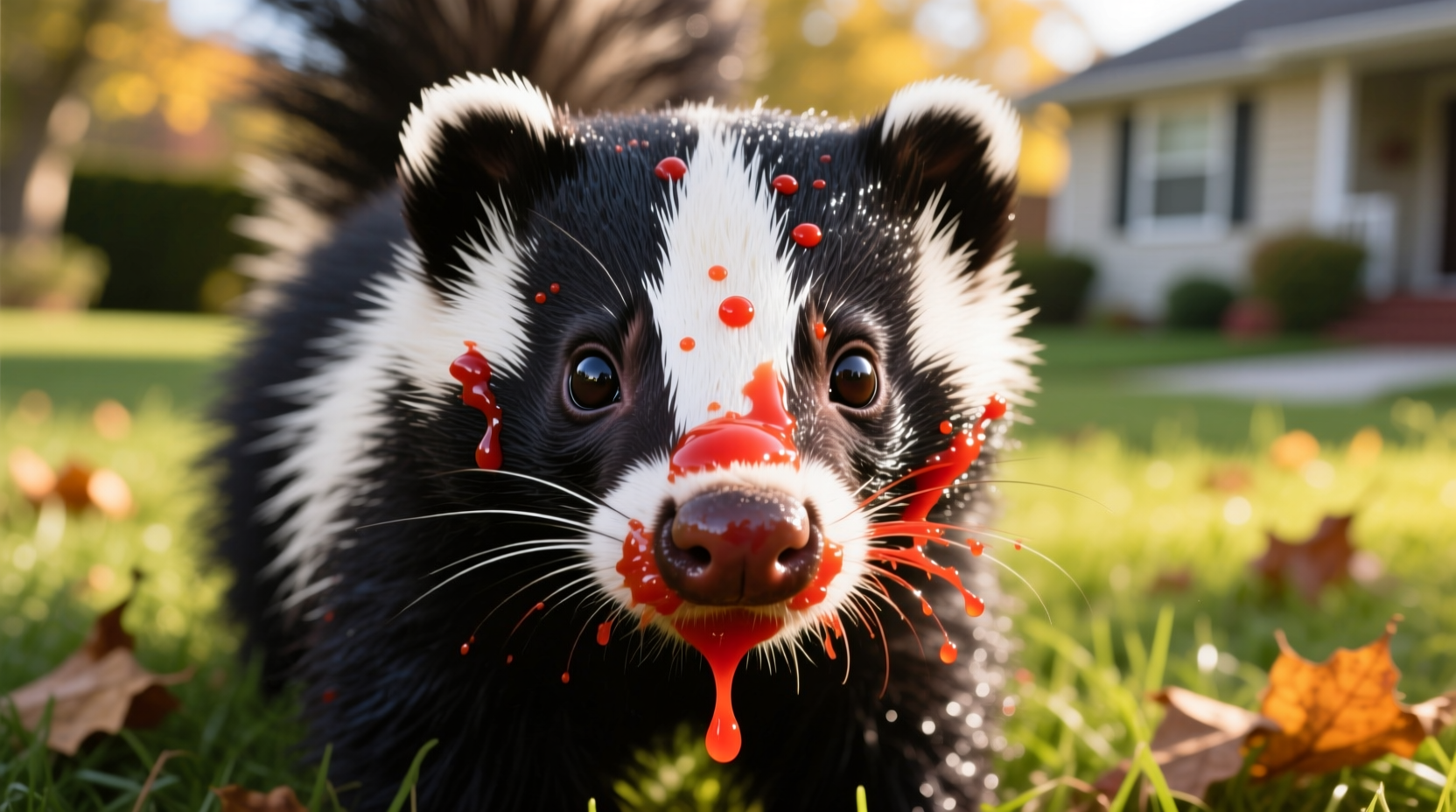The Science Behind Skunk Spray and Odor Removal
Skunk spray contains sulfur-based compounds called thiols, which bind strongly to proteins in skin, fur, and fabrics. These thiols are notoriously difficult to remove because they're hydrophobic (water-resistant) and have an extremely low detection threshold—humans can smell them at concentrations as low as 10 parts per billion.
When people suggest tomato juice as a remedy, they're relying on a sensory illusion rather than chemical neutralization. The strong aroma of tomato juice temporarily overwhelms your olfactory receptors, creating the perception that the skunk smell has disappeared. However, once the tomato scent fades, the underlying skunk odor remains.
Does Tomato Juice Actually Work? Evidence-Based Analysis
Multiple university extension services and wildlife experts have tested the tomato juice remedy. According to research from the University of Illinois Extension, tomato juice ranks among the least effective solutions for actual odor elimination.
| Removal Method | Effectiveness | Scientific Basis |
|---|---|---|
| Tomato juice bath | Low (temporary masking) | Olfactory distraction only |
| Peroxide-baking soda solution | High (permanent removal) | Oxidizes thiols into odorless compounds |
| Commercial skunk removers | Medium to High | Enzymatic breakdown of thiols |
| Vinegar solution | Low to Medium | Moderate oxidation effect |
Proper Skunk Odor Removal Protocol
For humans or pets exposed to skunk spray, follow this evidence-based approach:
- Immediate action: Move away from the area to avoid additional exposure
- Eye protection: Flush eyes with saline solution if affected (skunk spray causes temporary irritation)
- Pre-wash: Use rubber gloves and wipe visible spray with paper towels (don't rub)
- Primary treatment: Apply the proven peroxide solution: 1 quart 3% hydrogen peroxide + ¼ cup baking soda + 1-2 tsp dish soap. Apply immediately, leave for 5 minutes, then rinse.
- Secondary wash: Follow with regular shampoo or detergent wash

When Tomato Juice Might Seem to Help (And Why It's Misleading)
Tomato juice appears effective in certain situations due to contextual factors:
- Dilution effect: When used in large quantities (like a full bath), water content helps dilute surface-level spray
- Time factor: The 20-30 minutes spent in a tomato juice bath allows some natural dissipation of volatile compounds
- Sensory adaptation: Your nose becomes temporarily desensitized to both smells during prolonged exposure
However, these are temporary effects. The Rutgers New Jersey Agricultural Experiment Station confirms that tomato juice doesn't alter the chemical structure of skunk thiols, which is necessary for permanent removal.
Special Considerations for Different Surfaces
Skunk odor removal requires different approaches depending on the contaminated surface:
- Pet fur: Use the peroxide solution immediately; avoid getting in eyes
- Clothing: Wash twice with enzyme-based detergent after initial treatment
- Indoor surfaces: Ventilate area while treating with vinegar-water solution (1:1 ratio)
- Skin: Use the peroxide solution carefully on skin, followed by moisturizer
For porous materials like upholstery or carpeting, professional cleaning may be necessary as thiols can penetrate deep into fibers where home remedies can't reach effectively.
Prevention and Professional Solutions
When skunk encounters occur frequently in your area, consider these preventive measures:
- Seal entry points under decks and sheds where skunks might den
- Use motion-activated lighting in problem areas
- Remove potential food sources like pet food left outdoors
- Consult wildlife professionals for humane relocation if necessary
For severe contamination cases, especially involving indoor spaces, professional odor remediation services using ozone generators or hydroxyl reactors provide the most comprehensive solution. These systems break down odor molecules at the molecular level rather than masking them.











 浙公网安备
33010002000092号
浙公网安备
33010002000092号 浙B2-20120091-4
浙B2-20120091-4